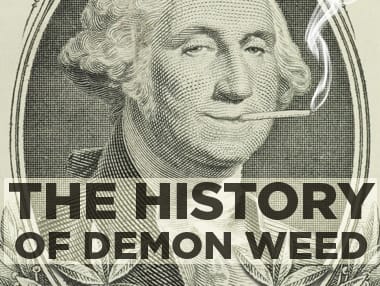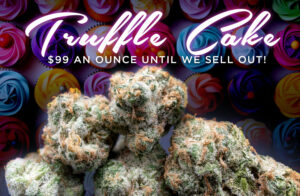How Racism, Hatred and Arrogance led to Marijuana Prohibition in the United States of America.
For most of American History, no law governed the growth and consumption of marijuana. Farmers cultivated hemp on the American continent for centuries. From the latter half of the 19th Century and well into the 20th Century, cannabis preparations were easily available to the American consumer. Unfortunately, economic uncertainty, bigotry, and fear lead to the banning of a plant which only years before had been considered a miracle drug by many in the medical community. How did we get there, and how have we started to chip away at such a regressive policy?
Early Years of Hemp
As early as 1619, Cannabis sativa plants were grown to provide fiber to the Virginia Company for the exportation of tobacco. Farmers relied on hemp to make rope and fabric before and after American independence. George Washington and Thomas Jefferson famously grew hemp at their Mount Vernon and Monticello estates. Hemp production in the United States continued well after the Civil War until a relaxation of tariffs led to the importation of other materials that would gradually replace the domestic production of hemp. Though its traditional uses were being phased out, cultivation of cannabis would continue for other reasons.
Western Medicine and Cannabis
Although cannabis was used in Eastern medicine for centuries, its introduction into Western medicine and culture can be traced back to one man: Dr. William Brooke (W.B.) O’Shaughnessy. The good doctor was already famous in the medical community for his discovery of electrolyte-replacement therapy for the treatment of cholera.[1] From there, his curiosity and fortune led him to India where he worked as a surgeon for the East India Company and discovered the many varied uses of Cannabis sativa. During his 9 year stint in India, Dr O. published the first medical research papers that would recommend Cannabis for a variety of ailments including spasms, tetanus, and convulsions. Dr. O. returned to England in 1841 taking cannabis with him and the rest is history. In short order, hundreds of papers were published about the medical use of cannabis. Based on this research, it became a common additive to medicines in public pharmacies in England, France, and the United States.
From Medicine to Demon Weed
By the late 19th Century, most American pharmacies had medicines with cannabis preparations that could be purchased from a druggist without a prescription. In fact, it was not until 1906 that the US government even required the labeling of ingredients in most medical preparations. Before this time, it was not uncommon for over the counter medicines to contain cocaine, opium, morphine, cannabis or a mixture of some or all of these drugs. Even with the new labeling requirements American doctors and pharmacists dolled out millions of cannabis prescriptions into the late 1920s. But soon panic began to grip the nation. California quietly banned cannabis use and Utah would follow suit a year later. By 1930, Marijuana was banned in 30 states. What had changed?
Nativism and Marijuana
The Mexican Revolution of 1910 led to over a million Mexicans coming to the United States seeking employment and economic opportunity, predominantly in the Southwestern states. Among many of these laborers the recreational use of marijuana (particularly smoked from a pipe) was commonplace. As nativism and anti-immigrant sentiment swept the nation in the 20th Century, Mexican migrants and their cultural practices (including marijuana use) were demonized.[2] A Texan politician claimed, “All Mexicans are crazy and this stuff (marijuana) is what makes them crazy.” Marijuana was falsely linked to violent crimes throughout the Southwest among claims that the drug gave people “superhuman strength,” and a “lust for blood.”
The fear spread from the American Southwest outward. In New Orleans, newspaper articles linked the drug to “unsavory types” such as jazz musicians, and prostitutes, further insinuating that its use lead to crimes committed by African Americans and “underworld” whites. Soon, rumors and reports circulated that the drug was being distributed to naïve American (White) schoolchildren. Anti-marijuana paranoia only increased among the racial animus brought on by The Great Depression and accompanying massive unemployment. This widespread panic and fear led to federal legislation.
The Father of the War on Weed
At the height of the Great Depression and Prohibition, a man by the name of Harry J Anslinger was appointed the commissioner of the newly created Federal Bureau of Narcotics (FBN) in 1930[3]. Anslinger had previously been a higher up in the Bureau of Prohibition, which was responsible for enforcing the Constitutional ban on alcohol. The ban was, in one word, disastrous. It had done little to prevent the tide of drinking in this country and turned the market over to organized crime and street gangs. A lack of regulation led to alcohol being dangerously mixed with toxic chemicals in order to stretch the limited supply to keep up with demand. Nonetheless, Anslinger did not learn these lessons and threw his weight behind expanding prohibition to cannabis.
Racial Animus as a Driver of Prohibition
While many states had already outlawed cannabis, it was Anslinger’s goal not only to get the drug outlawed federally, but to also treat it like it was a harmful chemical. Anslinger pulled no punches when he expressed his concern for Marijuana, reportedly saying, “reefer makes darkies think they’re as good as white men.” CBS News has also attributed the following quote to him:
“There are 100,000 total marijuana smokers in the U.S., and most are Negroes, Hispanics, Filipinos and entertainers. Their Satanic music, jazz and swing result from marijuana use. This marijuana causes white women to seek sexual relations with Negroes, entertainers and any others.”
Anslinger found a magic bullet when he linked cannabis to racial fears in the Jim Crow South and the American Southwest. The medical sounding name “cannabis” was dropped in favor of “marijuana” (from the Spanish “marihuana” used by Mexican migrants), which was selected to demonstrate “un-American” connotations. Despite repeated proclamations by scientists and doctors made directly to Anslinger he moved forward with his desire to prohibit the drug, even after the alcohol prohibition of the 21st Amendment ended abject failure. Anslinger went before Congress with a “gore file” of graphic photos of murders and rapes that he had concluded were done because of the use of marijuana. In a 1937 article he peddled phony statistics about crimes after the “smoking of the weed,” and called marijuana the “assassin of youth.”
Anslinger’s attacks on the plant and racial minorities, coupled with the infamous 1936 film Reefer Madness, led to the Marihuana Tax Act of 1937, prohibiting possession of Cannabis sativa unless it was for pre-authorized medical or industrial uses. Anslinger would remain at his post for the next 25 years, pushing for tougher drug laws and sentences for those who possessed marijuana. He also launched smear campaigns against those who questioned his tactics or “research.” Famously, he had Billie Holiday handcuffed to a bed because he believed she had been using opiates and marijuana. Obsessed with the sultry and lurid affects of jazz music on white America (particularly white women) he maintained a massive file he labeled “marijuana and musicians.”
Conclusions
While prohibition of marijuana started in 1937 amid anti-drug hysteria, its continued association with minorities and the anti-war left lead to it becoming a Schedule 1 narcotic in 1970 – a list otherwise composed of drugs that are far more dangerous and addictive. As freedom advocates, cannabis activists, and lawmakers work to undo the damage caused by such a dark and bigoted agenda, some of the myths and hysteria created by Anslinger and his cronies won’t die. Respectable journalists still push craven agendas aimed at maintaining fear when it comes to cannabis. The enforcement of marijuana laws still has a racial component that have led to the higher arrest and incarceration rates for African Americans and Latinos. States across the nation are following Washington State’s lead and rejecting prohibition. This is absolutely a step in the right direction, but we must continue to move forward until marijuana prohibition and its harmful affects are nothing but a footnote in our history.
[1] This is the same concepts that lead to the development of Gatorade! Pretty cool, Dr. O! [2] Demonizing the use of drugs and alcohol among immigrants has long been common place. For example, the drinking of Scots-Irish and Germans was demonized as well as opium use by Chinese immigrants. [3] The FBN was a precursor to the Drug Enforcement Administration (DEA).








 are registered trademarks of Suquamish Evergreen Corporation (SEC). Use of the ® symbol herein designates SEC’s trademark rights in association with only those goods and services listed in Reg. Nos. 7,402,321; 7,668,174; 7,668,175; and 7,711,503
are registered trademarks of Suquamish Evergreen Corporation (SEC). Use of the ® symbol herein designates SEC’s trademark rights in association with only those goods and services listed in Reg. Nos. 7,402,321; 7,668,174; 7,668,175; and 7,711,503